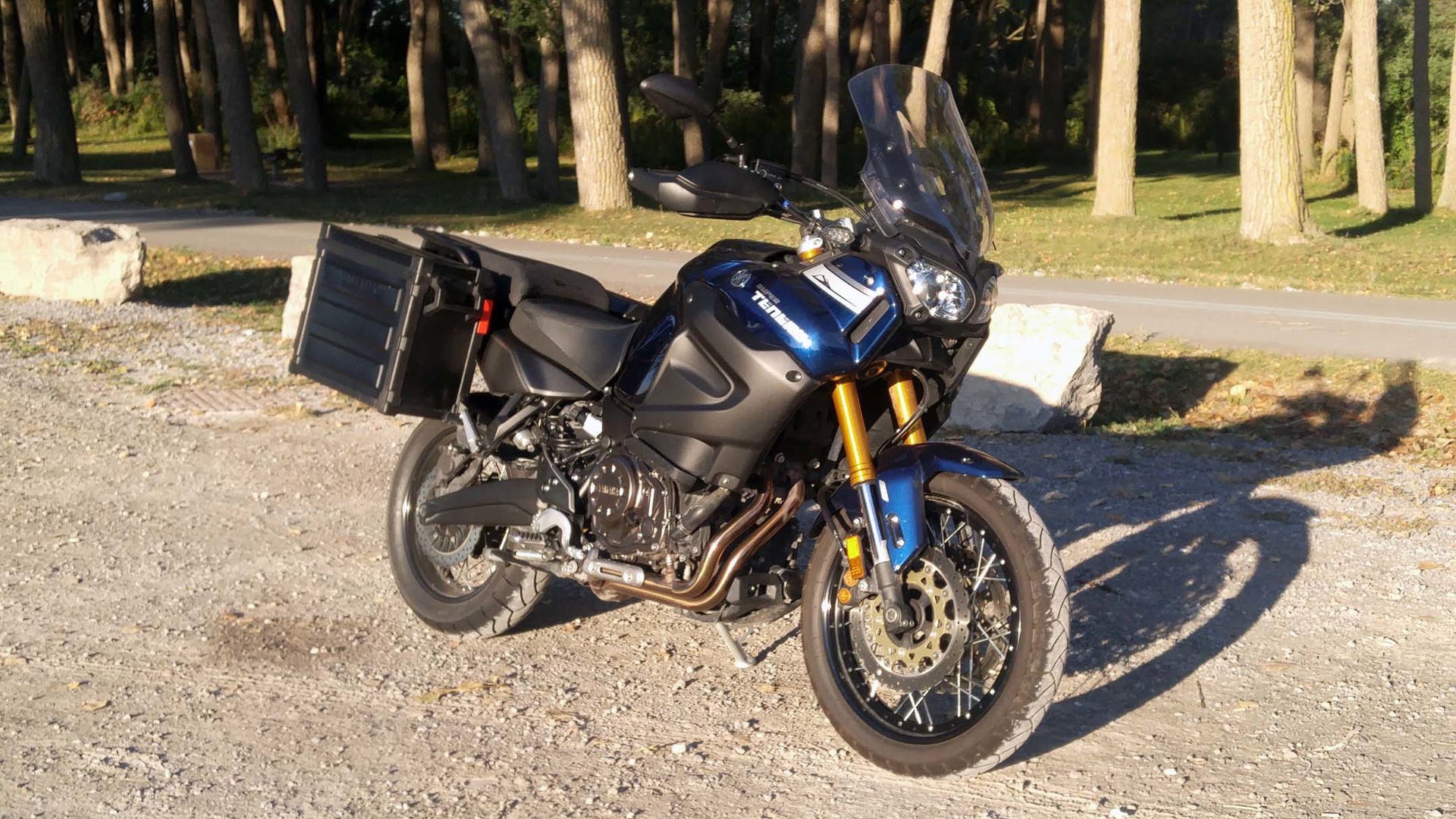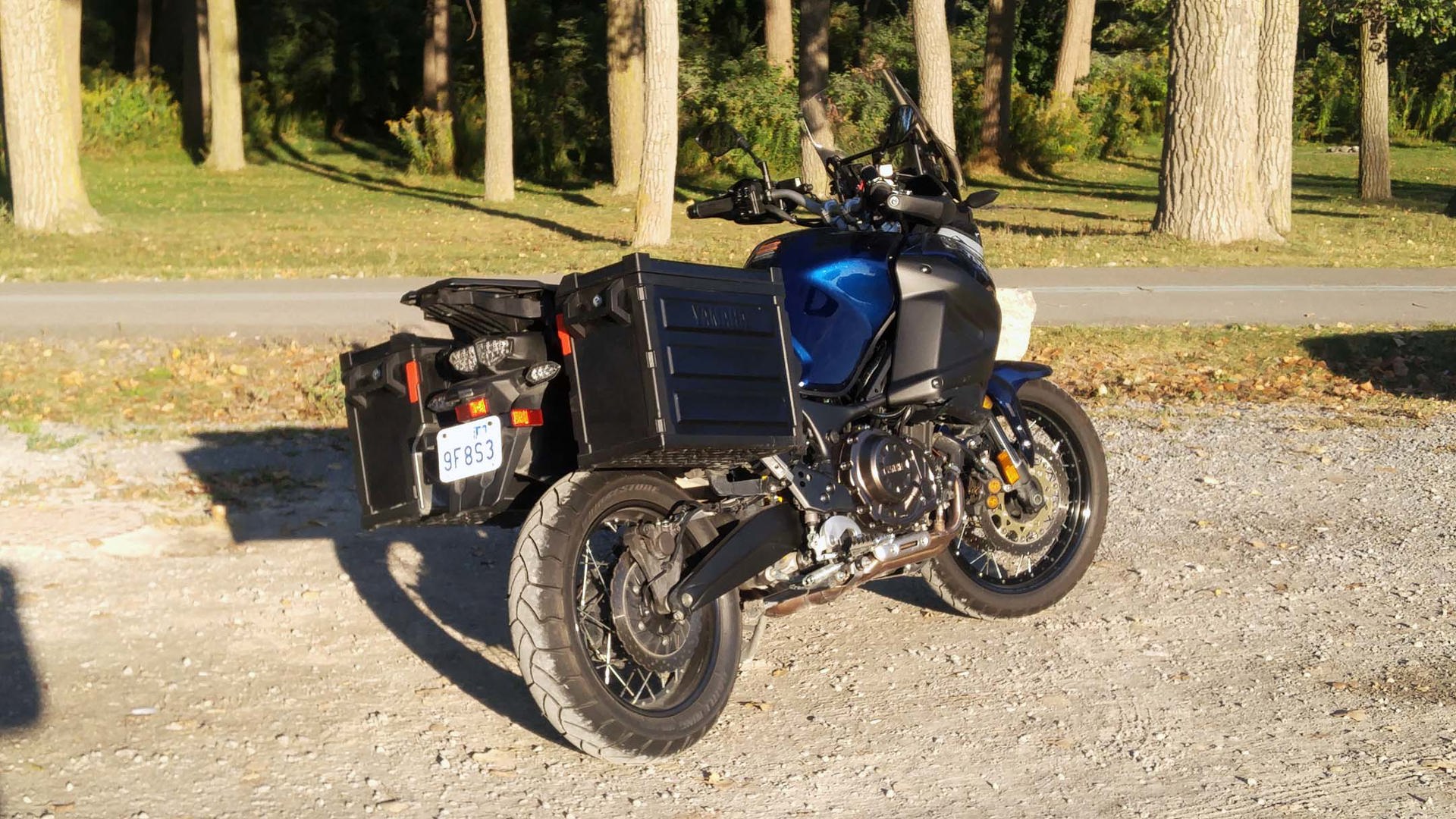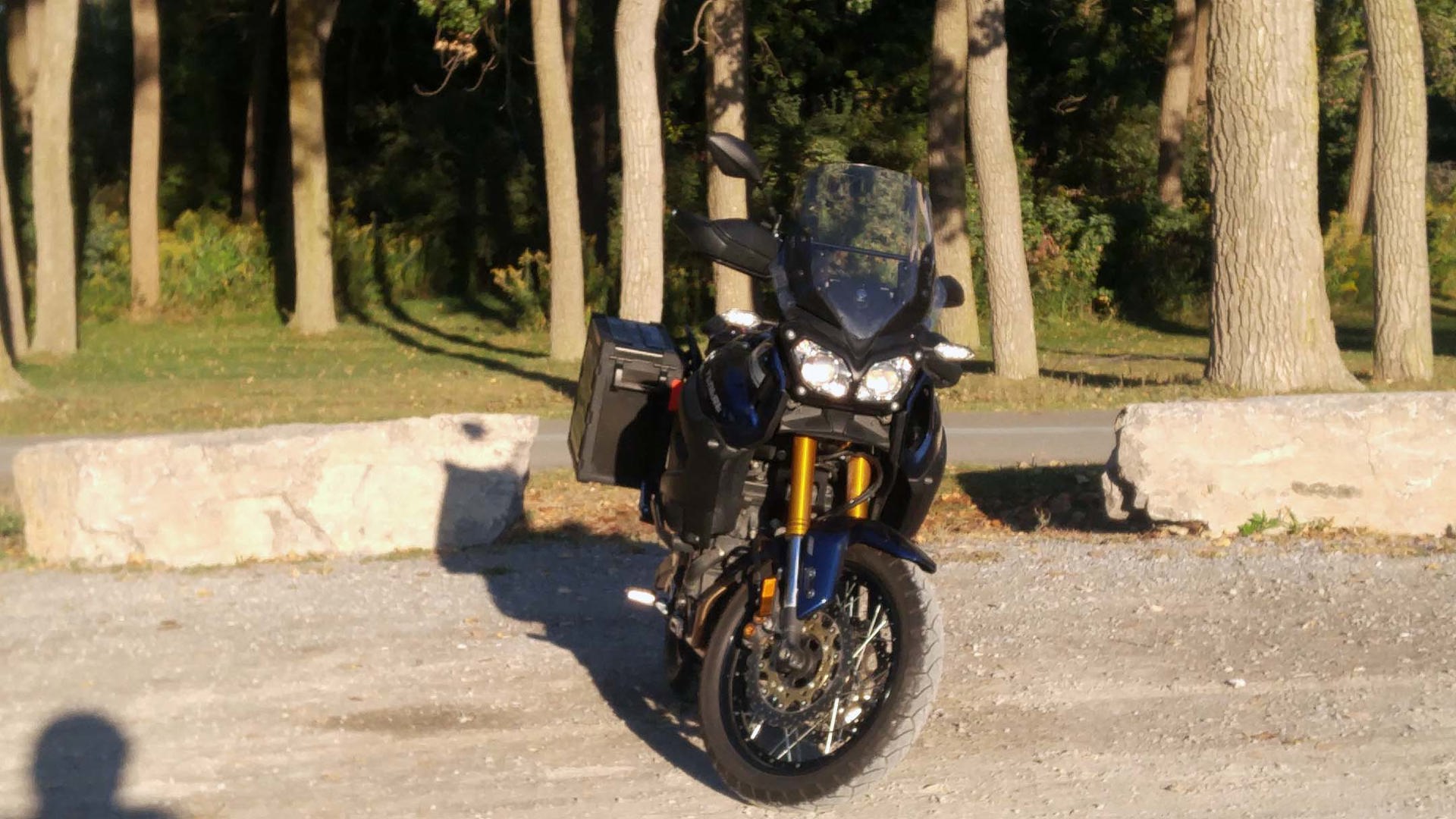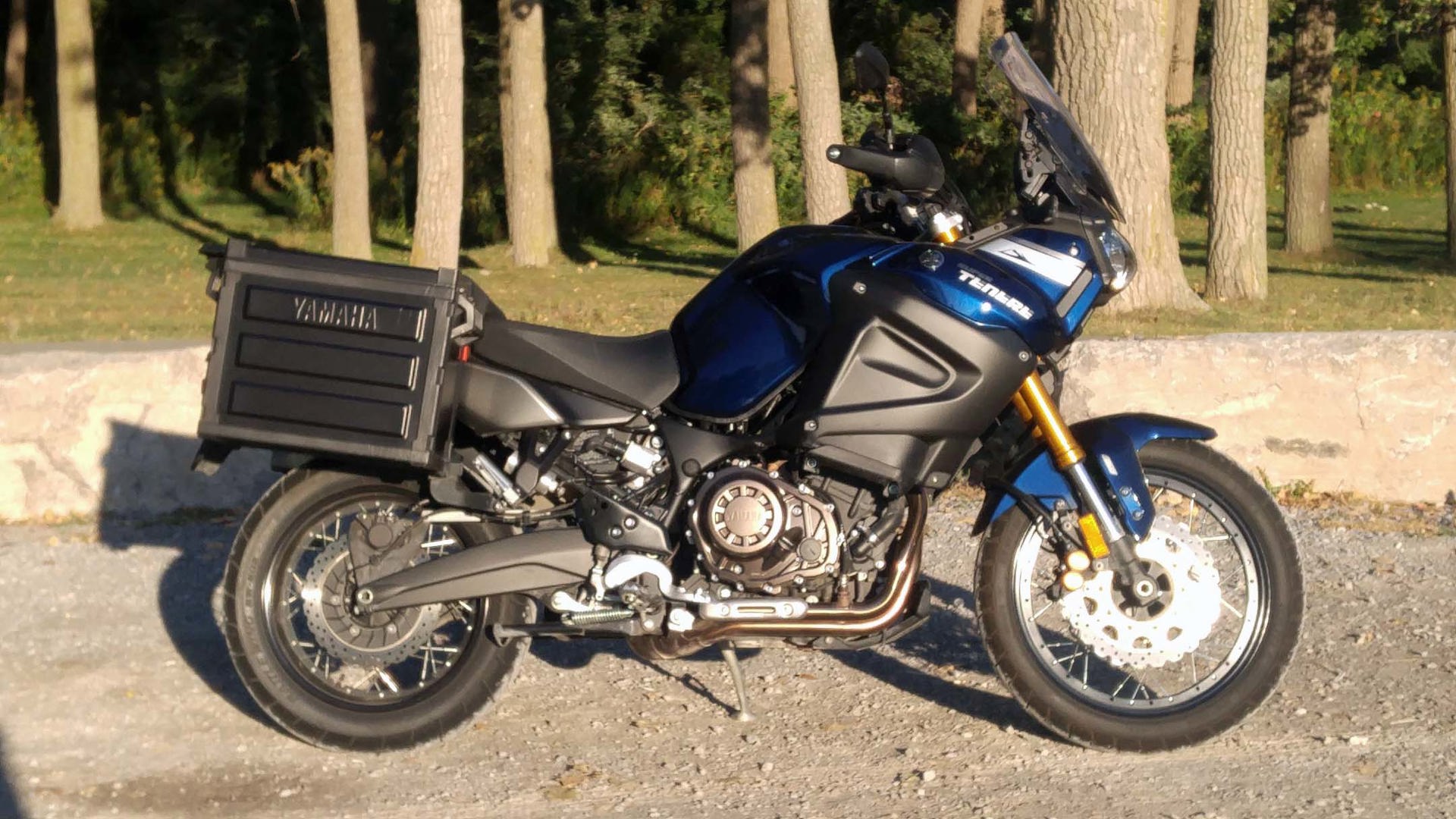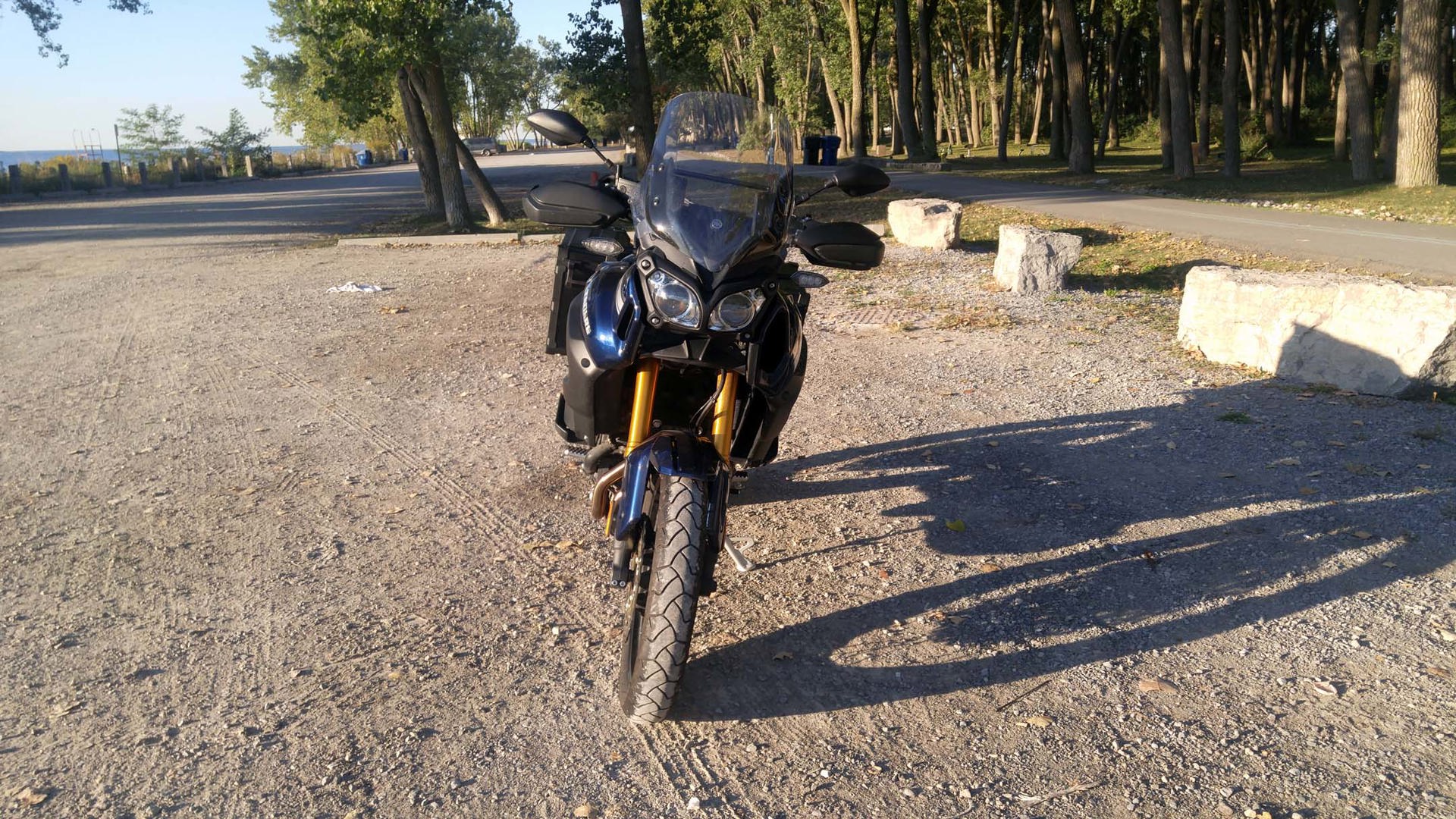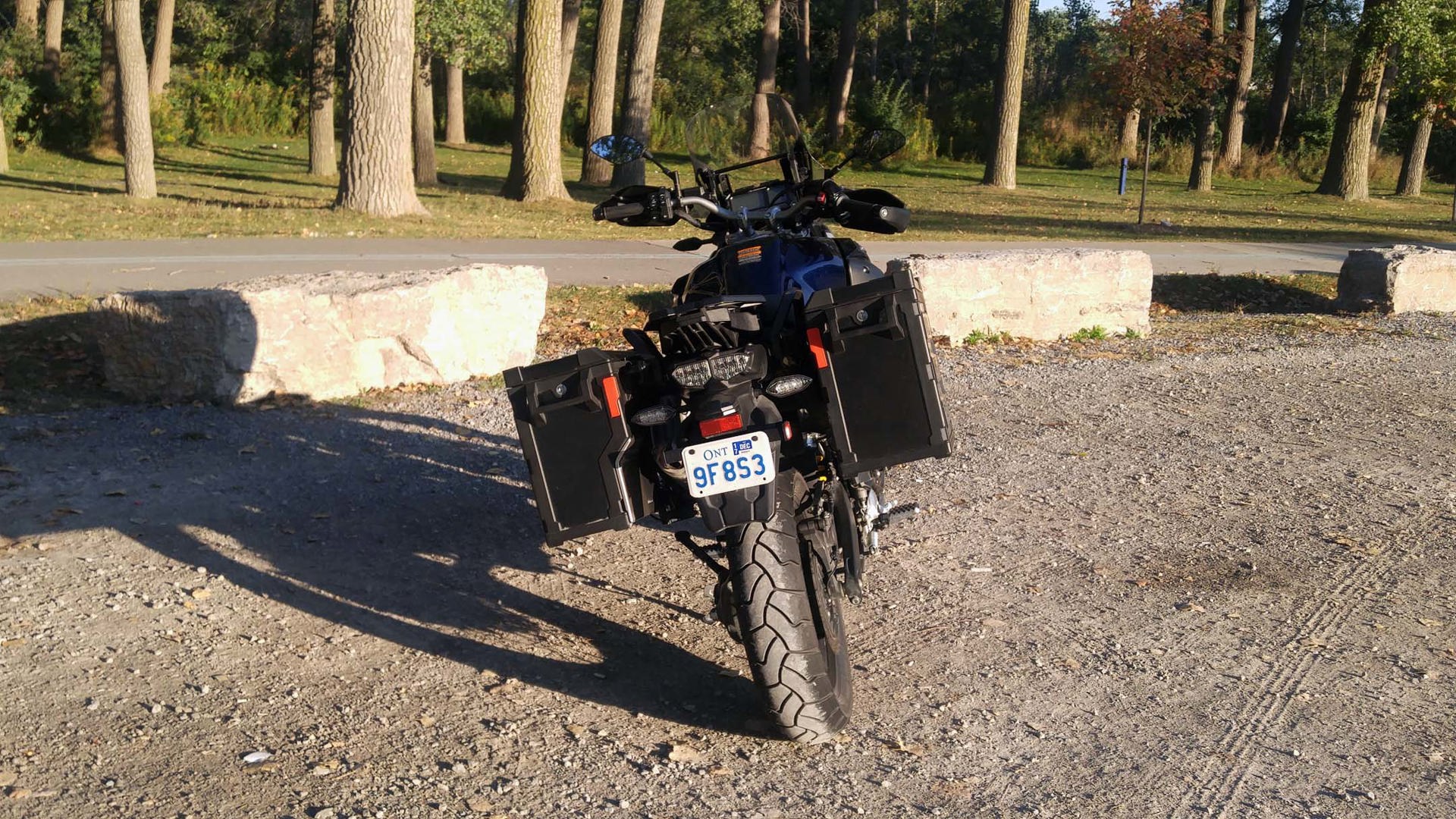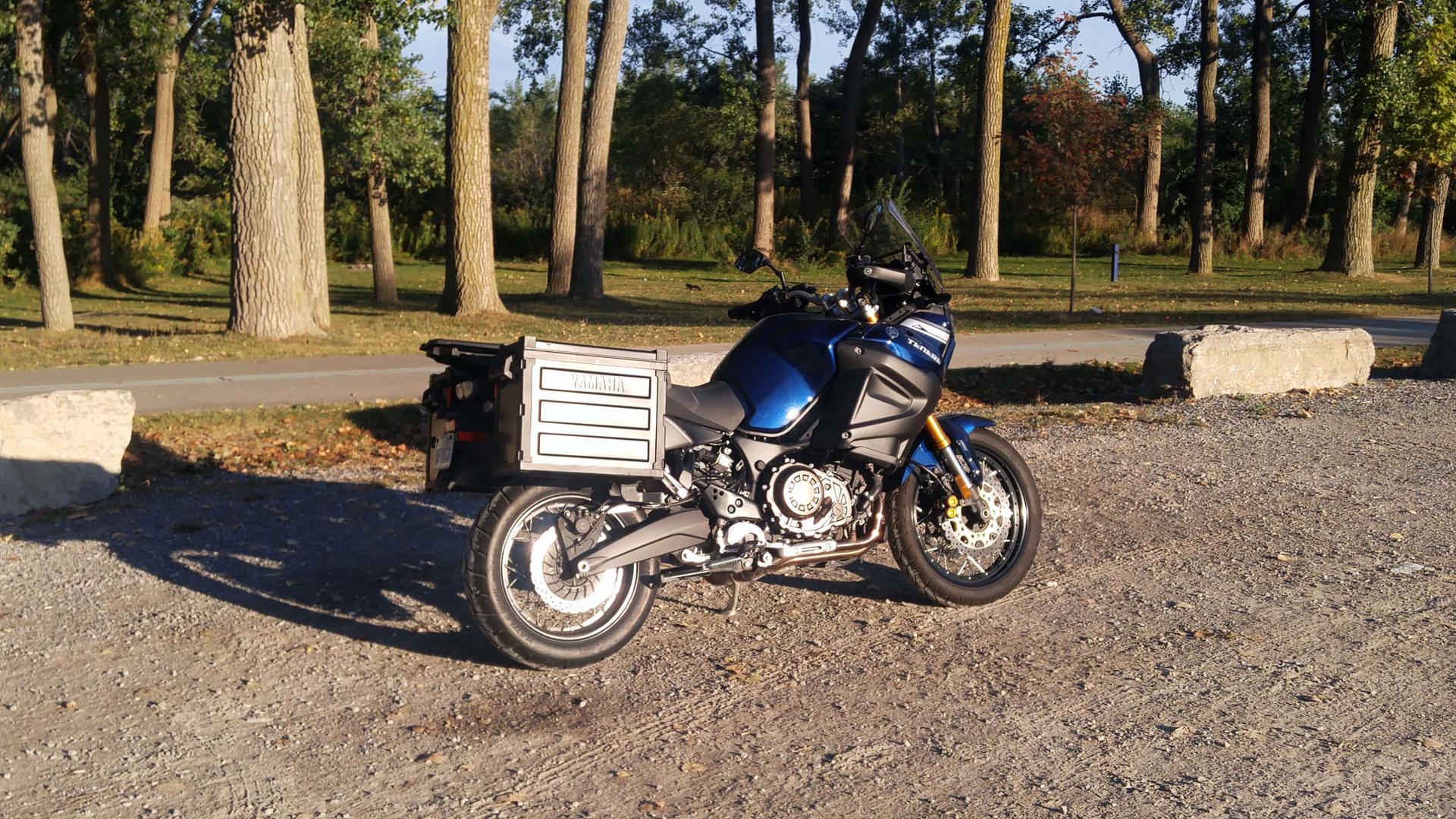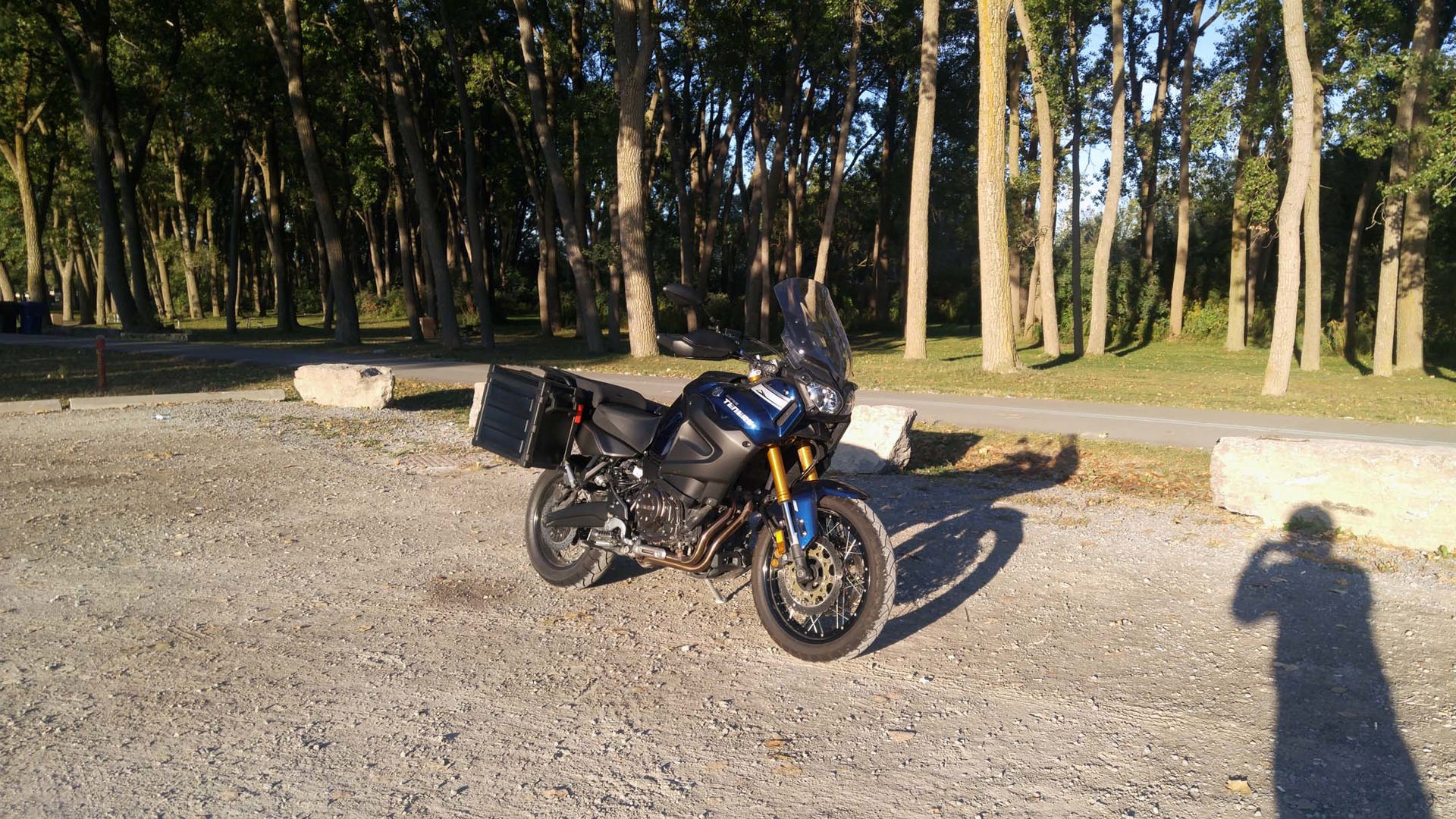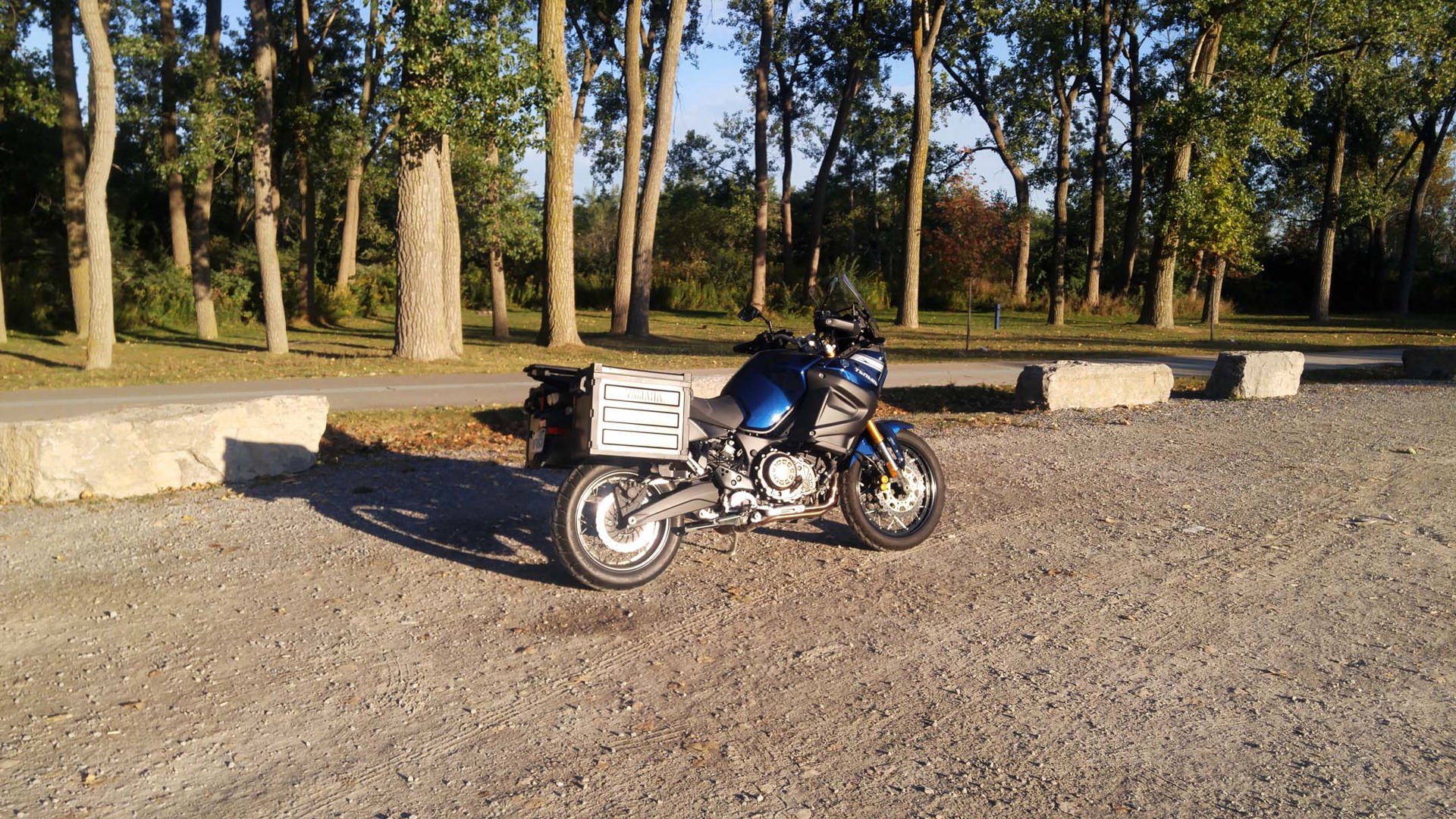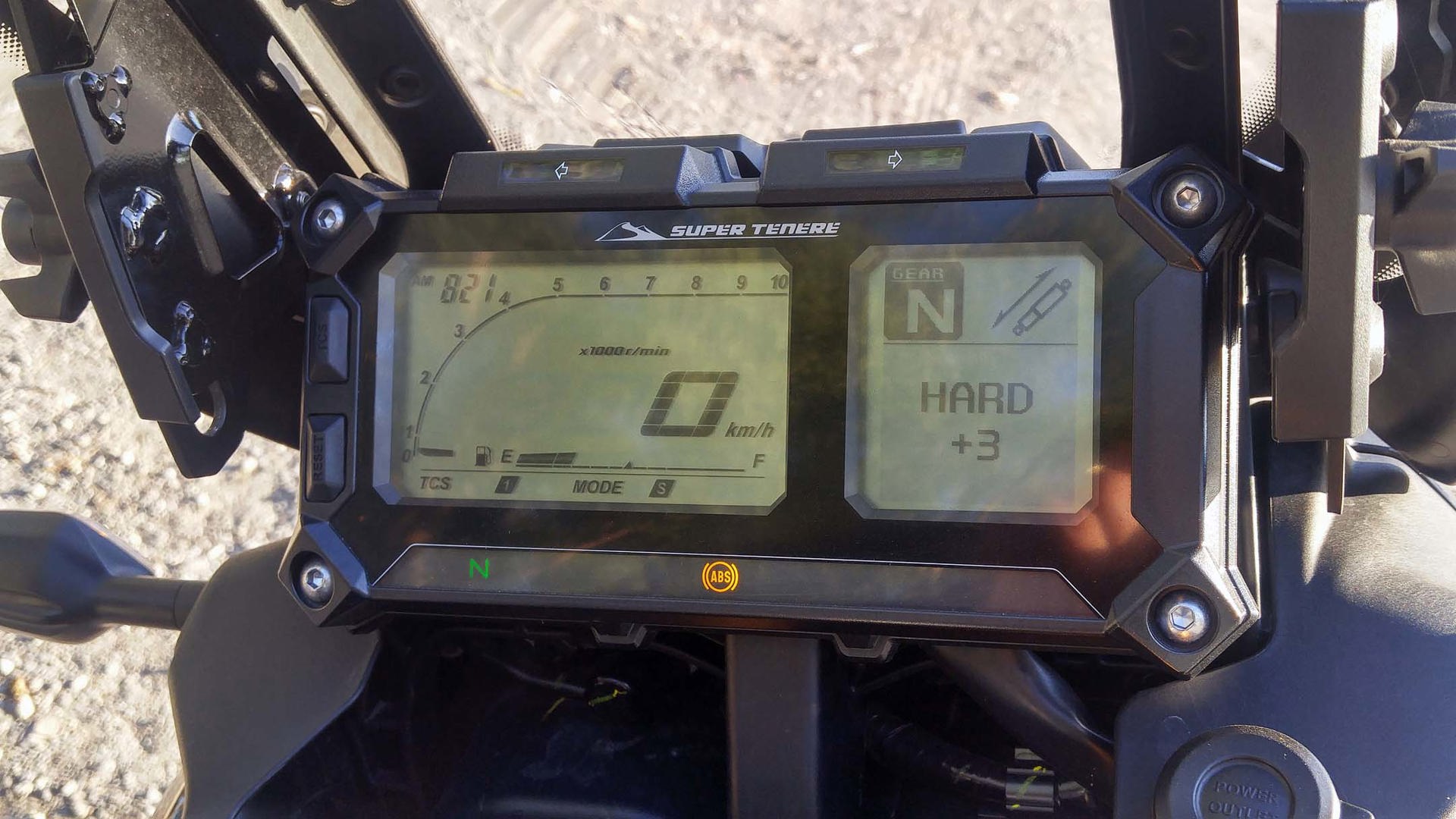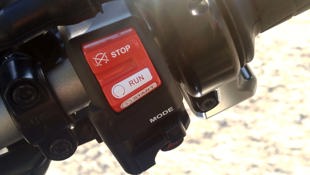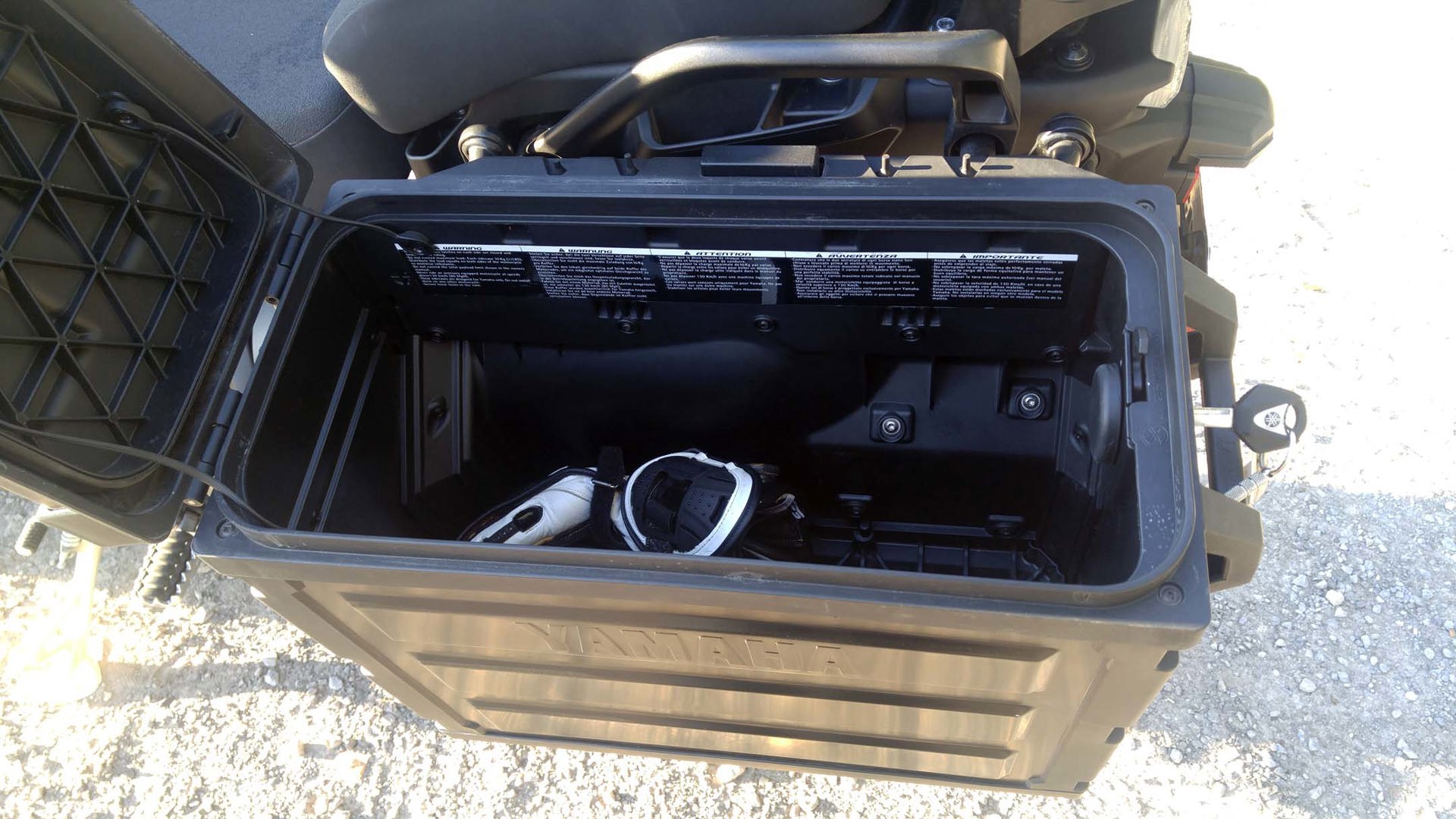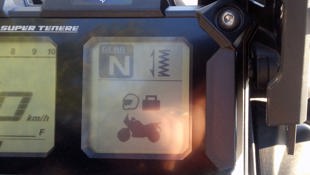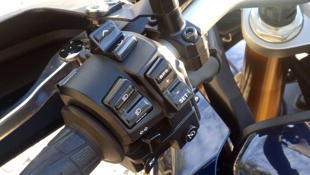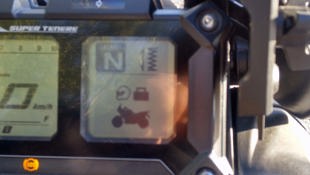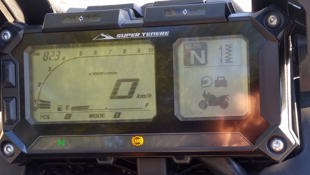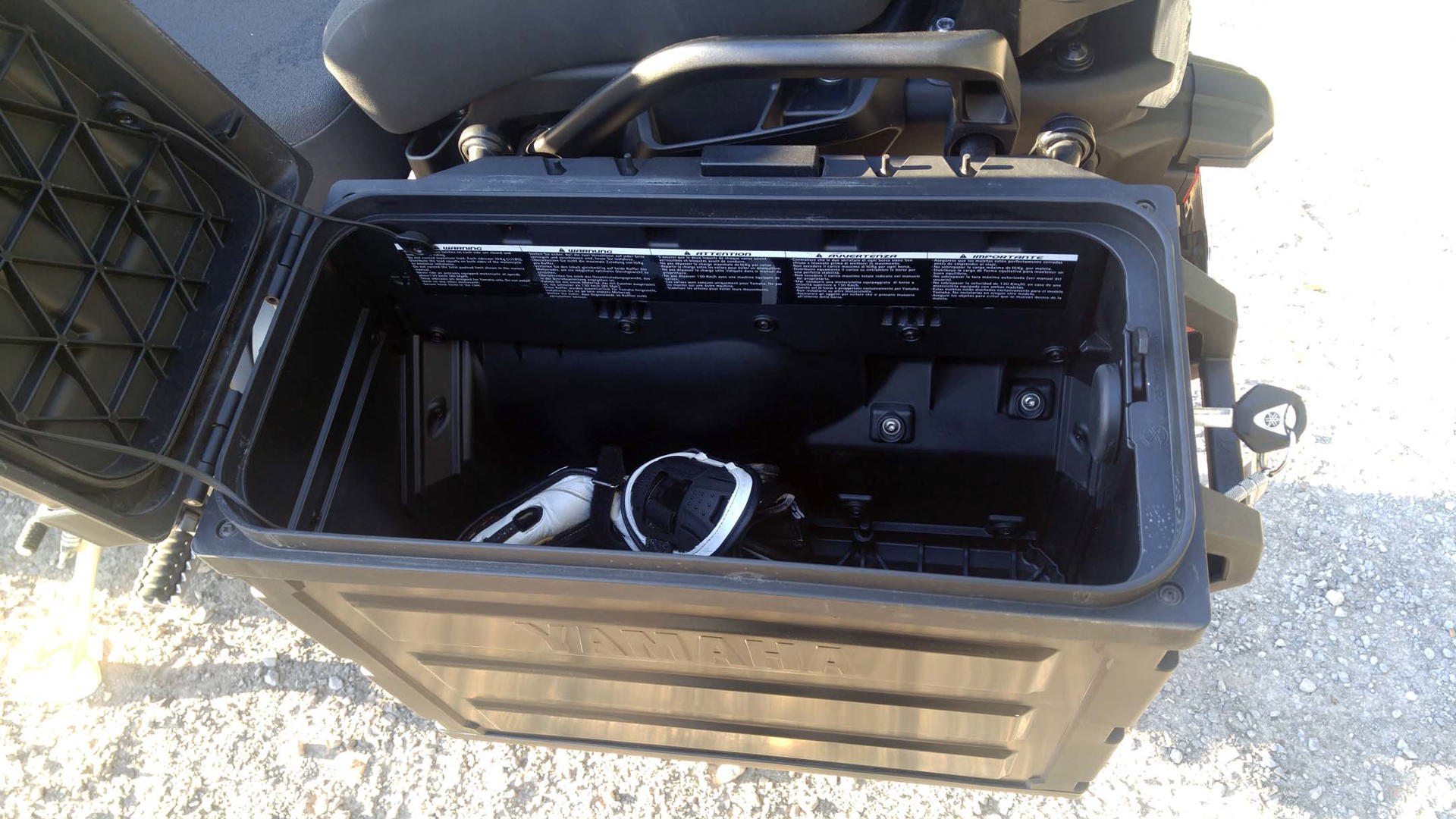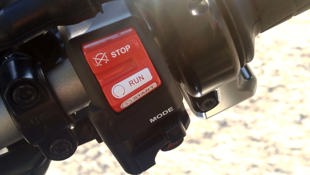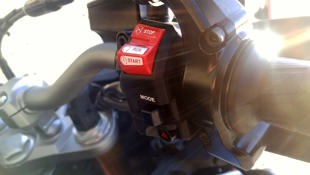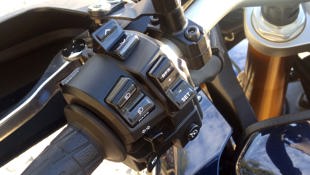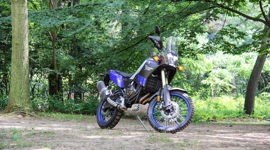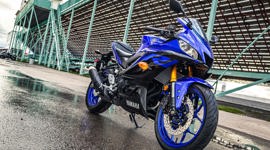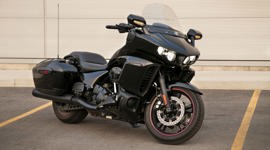 AutoTrader SCORE
AutoTrader SCORE
-
STYLING7/10
-
Safety8/10
-
PRACTICALITY9/10
-
USER-FRIENDLINESS8/10
-
FEATURES8/10
-
POWER6/10
-
COMFORT8/10
-
DRIVING FEEL7/10
-
FUEL ECONOMY6/10
-
VALUE7/10
There’s nothing more user-friendly than easy to understand simple picture icons. Which is why there are few things simpler to sort out than the settings on the electronically controlled “linked” suspension of this 2017 Yamaha Super Tenere.
It’s not hard to understand why people love the Tenere.
A helmet, a helmet and a suitcase, or two helmets – that’s how you know which preload setting to use via the electric spring set through a menu in the dashboard. Me, I’m a tubby fella, so I set it to two helmets.
Arguably the biggest ace up the Tenere’s sleeve, this electrically controlled suspension is all dealt with via the left switch block. Preload settings for the rear shock can be set only while the bike is at a standstill with the engine running. The three main damping settings (soft, standard, and hard) can be toggled on the fly – but wait, there’s more. Those three settings have seven levels of fine tuning each, from negative three to positive three through zero. You can only access the second tier of fine tuning when standing still, but if you set “soft” to -3 and “hard” to +3 the system will remember your setting.
The result, is a spectacularly well damped suspension. Curiously, I found soft to be far too soft, but in hard I was in awe of the Tenere’s ability to smooth the road out underneath me. This is a thoroughly compliant setup that delivers extreme comfort on a variety of surfaces. It will accept imperfections in the road mid-corner with equal aplomb, but I find the Tenere awkward to tip in. It’s very top heavy, even for an adventure tourer, and falls into the corner in a way I find disconcerting. Firm and assertive counter steering is the best way to manage the Tenere on the way into corners.
Apart from the suspension, Tenere fans have often raved about the 1,199 cc inline-twin’s potency. It’s 112 hp and 86 lb-ft of torque are respectable numbers. The difference between Touring mode and Sport mode (tuned via a button on the right switch block above the starter) is pronounced. But this engine sounds extremely harsh. Added to that, the initial response from idle, whether from a standstill or while coasting suffers from the inertia of the driveshaft.
That initial take-off comes with a jerk. Past that point, the Tenere rolls out power smoothly, and accelerating from say 80 km/h to 120 for an overtake is an effortless and comfortable experience. Long story short? This drivetrain works best when touring. On the Tenere, consistent forward momentum is your friend.
Other niggles? The generous 32 L saddle bags are finicky to open, and even more finicky to close. The key barrel is stiff, and worse than that, you have to apply pressure to the key as you close the lid in order to shut it. It’s a two-hand job to close a saddle bag, when it should be one. In a perfect world, you’d be able to press gently down on the lid and have it click into place, no key intervention required. Perhaps this improves with time and use, but for the week I had it I found this infuriating.
The saddle bag issue was perhaps accentuated on this bike because the rest of the ergonomics are just perfect – once rolling, that is.
The adjustable windscreen gave plenty of protection from wind buffeting and wind noise, the heated handlebars fell nicely to hand.
The pillion grab handles make it easy to lift the 261 kg Tenere on to its robust centre stand, but even if they didn’t, you would be happy enough using the beefy sidestand.
At 845 mm the Yamaha’s seat height challenged my hobbit-esque inseam, but I was able to mount confidently from the sidestand. Left leg on the peg, swing the right over, use the pegs to stand it up as I drop into the seat, kick the stand up and get going. Voila! And once rolling, the straight-down leg position, comfortable and wide seat plus well-laced handlebars made for a riding position I could hold for hours.
Did I mention the heated grips? I am Australian, where it is hot. I live in Canada. Where it is not. Heated grips make me happy in my soul.
It’s not hard to understand why people love the Tenere. It’s long-haul abilities and grunty (if harsh) engine make for a bike you can happily spend a lot of time with. It’s more confident than I expected on gravel, too. The spoked 19-inch front and 17-inch rear wheels dance well over rough-packed gravel roads, with 190 mm of wheel travel at both ends enough for most riders in most settings.
At an estimated rating of 5.5 L/100 km, the Tenere has good range from its 23 L tank, and I saw an average after several hundred kilometres of 5.0 L/100 km. A 400+ km run is therefore well within the realms of possibility.
Pre-wired with a 12v outlet on the dash, the Tenere also has consistent, round handlebars (something the FJR1300 for example, lacks. That makes for easy mounting of GPS and other accessories.
Versatility, then, is massive on this bike. It will do a lot, for a long distance, and make a lot of people happy. Sure, there are some rough edges to smooth out – but then again, when was the last time you met an Iron Butt without some rough edges?
| Engine Displacement | 1,199cc |
|---|---|
| Engine Cylinders | Inline twin |
| Peak Horsepower | 112 @ 7250 rpm |
| Peak Torque | 86 lb-ft @ 6,000 rpm |
| Fuel Economy | 5.0 L/100 km (observed) |
| Cargo Space | 64 L |
| Model Tested | 2017 Yamaha Super Tenere ES |
| Base Price | $16,999 |
| A/C Tax | N/A |
| Destination Fee | N/A |
| Price as Tested | $16,999 |
|
Optional Equipment
None
|
|
